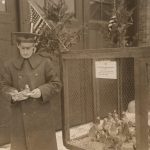
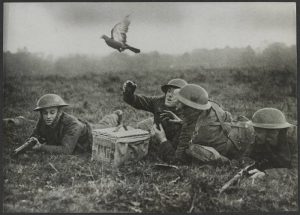 The world was embarking on the industrial revolution, and it was during World War I that we found out just how much of a difference that industrial revolution could make in wartime. From the introduction of airplanes to the use of tanks and railway guns on the battlefield, soldiers had to contend not only with each other but with the productions of the factory floor. Even the recent invention of the telephone made its way into battlefield units, where soldiers used it to convey orders or direct artillery fire.
The world was embarking on the industrial revolution, and it was during World War I that we found out just how much of a difference that industrial revolution could make in wartime. From the introduction of airplanes to the use of tanks and railway guns on the battlefield, soldiers had to contend not only with each other but with the productions of the factory floor. Even the recent invention of the telephone made its way into battlefield units, where soldiers used it to convey orders or direct artillery fire.
Nevertheless, there was one area where technology was not as “up to date” as it needed to be. The telephone while a great invention, was not as reliable as the commanders of Europe would have liked. I guess that anyone who has used a modern-day cellular phone can relate that. I’m sure that they could envision the need to arrange their operations, and they weren’t too sure the information was completely safe. So, they brainstormed alternatives in an attempt to improve combat communications. The leaders of World War I turned to a much older form of communication…the carrier pigeon.
Pigeons had been used for communication for many, many years. These unsung heroes of World War I, the carrier pigeons, used by both the Allied and Central Powers, helped assist their respective commanders with an accuracy and clarity unmatched by the modern technology. The National Archives holds a vast collection of messages that these feathered fighters delivered for American soldiers. Using these messages and the history of the carrier pigeon in battle, we can look at what hardship these fearless fowls endured and how their actions 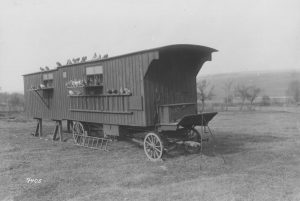 saved American lives. One of the most impressive things about the war records of the carrier pigeons was how widely the birds were used. Their service as battlefield messengers is their most known use, and the pigeons found homes in every branch of service.
saved American lives. One of the most impressive things about the war records of the carrier pigeons was how widely the birds were used. Their service as battlefield messengers is their most known use, and the pigeons found homes in every branch of service.
The rudimentary airplanes of the embattled countries used pigeons to provide updates midair. Launched mid-mission, the birds would fly back to their coops and update ground commanders on what the pilots had observed. These strange update methods were born of the essential need for leaders to know what the battlefield looked like and what the enemy was doing in its own trenches. Planes flying over and pigeons bringing the information back quickly was the best way to stay ahead of the enemy. In addition, tanks carried the birds in order to relay the advance of individual units. Even after the introduction of the radio, pigeons were often the easiest way to help coordinate tank units without exposing the men to dangerous fire. Radios to be overheard. Of course, while it made the soldiers safer, the pigeons were not necessarily safer. Many of them didn’t make it back home, having been shot down and/or used for food for starving families. Still, without a radio set, the soldiers would have had to leave the relative safety of their tanks to relay or receive orders. These birds saved lives, even if it meant sacrificing their own. Their owners also saved lives by allowing their pigeons to be involved. They were a great asset to the war effort of more than one war.
The birds’ most effective use was on the front line, as they were brought forward with their armies to help update commanders and planners in the rear. When the birds were away from their home lofts, they stayed in mobile units, which were usually converted horse carriages or even double-decker buses. I’m sure it made a 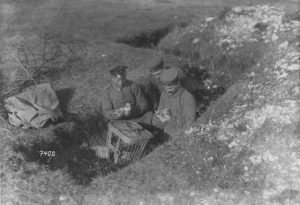
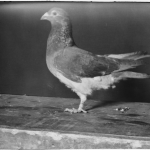 strange sight. The mobile lofts were useful when the armies outpaced their established lines of communications or when the enemy disrupted communications lines for the telegraphs or telephones, as they often did during battle. While the other Allied powers were first to use birds, the United States did not lag far behind when we entered the fray. During the course of the war, many birds performed heroic deeds in the course of service and became heroes in their own rights.
strange sight. The mobile lofts were useful when the armies outpaced their established lines of communications or when the enemy disrupted communications lines for the telegraphs or telephones, as they often did during battle. While the other Allied powers were first to use birds, the United States did not lag far behind when we entered the fray. During the course of the war, many birds performed heroic deeds in the course of service and became heroes in their own rights.


Leave a Reply